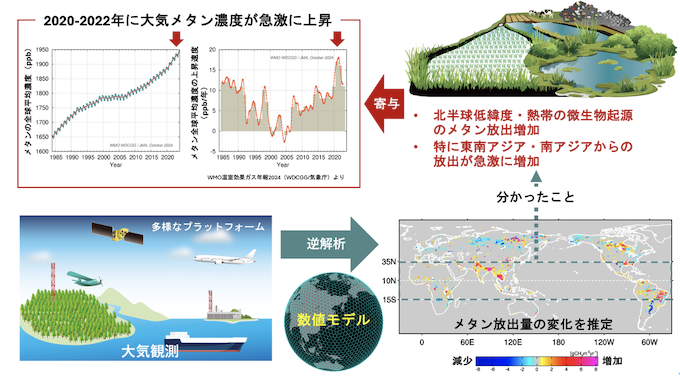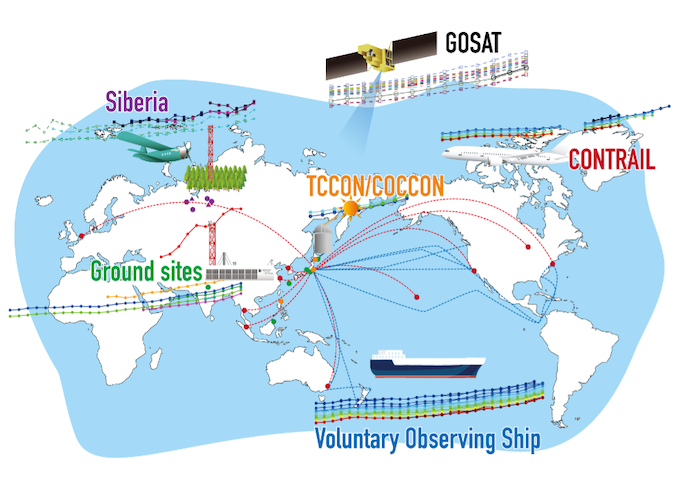2025-07-07 国立環境研究所,東京大学,東北大学,気象庁気象研究所,獨協大学,国立極地研究所

<関連情報>
- https://www.nies.go.jp/whatsnew/2025/20250707/20250707-2.html
- https://acp.copernicus.org/articles/25/6757/2025/
2020-2022年における大気中CH4の持続的な高成長率に対する地域的・部門的排出寄与の多観測による推定 Multi-observational estimation of regional and sectoral emission contributions to the persistent high growth rate of atmospheric CH4 for 2020–2022
Yosuke Niwa, Yasunori Tohjima, Yukio Terao, Tazu Saeki, Akihiko Ito, Taku Umezawa, Kyohei Yamada, Motoki Sasakawa, Toshinobu Machida, Shin-Ichiro Nakaoka, Hideki Nara, Hiroshi Tanimoto, Hitoshi Mukai, Yukio Yoshida, Shinji Morimoto, Shinya Takatsuji, Kazuhiro Tsuboi, Yousuke Sawa, Hidekazu Matsueda, Kentaro Ishijima, Ryo Fujita, Daisuke Goto, Xin Lan, Kenneth Schuldt, Michal Heliasz, Tobias Biermann, Lukasz Chmura, Jarsolaw Necki, Irène Xueref-Remy, and Damiano Sferlazzo
Atmospheric Chemistry and Physics Published:07 Jul 2025
DOI:https://doi.org/10.5194/acp-25-6757-2025
Abstract
Atmospheric methane (CH4) growth rates reached unprecedented values in the years 2020–2022. To identify the main drivers of this increase, an inverse modeling study estimated regional and sectoral emission changes for 2016–2022. Three inverse estimates based on different sets of atmospheric CH4 observations (surface observations only, surface and aircraft observations, and GOSAT observations) consistently suggest notable emission increases from 2016–2019 to 2020–2022 in the tropics (15° S–10° N) (10–18 Tg CH4 yr−1) and in northern low latitudes (10–35° N) (ca. 20 Tg CH4 yr−1), the latter of which likely contributed to the growth rate surge from 2020. The emission increase in the northern low latitudes is attributed to emissions in South Asia and northern Southeast Asia, which abruptly increased from 2019 to 2020, and elevated emissions continued until 2022. Meanwhile, the tropical emission increase is dominated by Tropical South America and Central Africa, but emissions were continuously increasing before 2019. Agreement was found in the sectoral estimates of the three inversions in the tropics and northern low latitudes, suggesting the largest contribution of biogenic emissions. Uncertainty reductions demonstrate that the flux estimates in Asia are well constrained by surface and aircraft observations. Furthermore, a sensitivity test with the probable reduction of OH radicals showed smaller emissions by up to 2–3 Tg CH4 yr−1 in each Asian region for 2020, still suggesting notable emission contributions. These results highlight the importance of biogenic emissions in Asian regions for the persistent high growth rate observed during 2020–2022.



